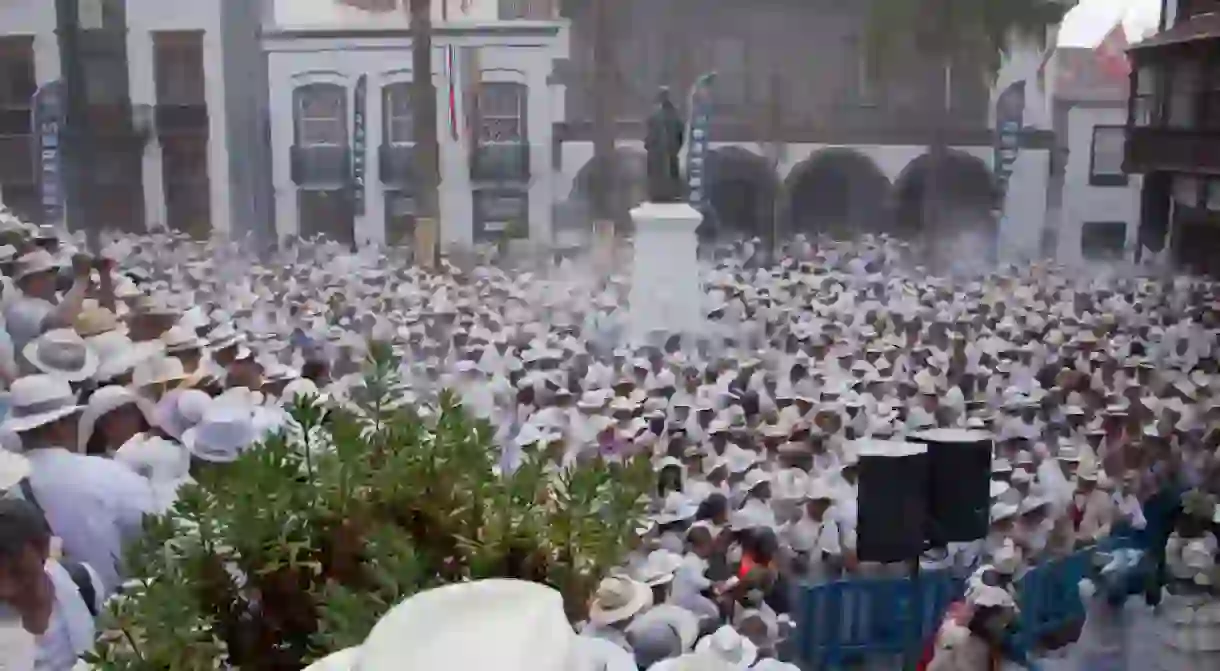The 7 Most Unusual Festivals In Spain

Spain has many interesting celebrations each year, often based on centuries old traditions. We’ve compiled a guide to the seven most unusual Spanish festivals of all.
Los Hombres de Musgo
Every year during the Feast of Corpus Christi procession, a select group of men known as ‘Los Hombres de Musgo,‘ or the ‘The Moss Men,’ cover themselves in moss to reenact the retaking of the town of Béjar from Moorish occupiers in the 12th century. The legend goes that local men disguised themselves with moss so as not to be seen by the Moors when approaching the town. They infiltrated the town and chased away the occupiers, who believed they were being chased by some ghoulish creature.
La Tomatina
Perhaps the most well known of Spanish festivals, but nonetheless deserving of its place in our ranking. La Tomatina is an annual festival celebrated in the small town of Buñol where thousands of people participate in what is undoubtedly the largest tomato fight in the world. A relatively recent tradition, the festival has only been celebrated since the 1940s, and no one is quite sure how it came about.

Rapa das Bestas
This festival celebrated across Galicia serves a practical purpose: to shear the manes of the over 600 semi-wild horses that roam the area freely. In the town of Sabucca the tradition lasts three days, during which the horses are rounded up and held down by men known as aloitadores. They use nothing but their own body weight and strength to restrain the animals while the rapa, or shearing, takes place.
Antzar Eguna
The Antzar Eguna, or ‘Day of the Geese’, is a competition held in the Basque port of Leikeitio, which involves young men jumping from their fishing boat to try and decapitate a greased up dead goose. It’s only in recent years, prompted by complaints from animal rights advocates, that competition organizers have opted to use a dead goose instead of a live one.

Cascamorras
Probably the dirtiest of Spanish celebrations, the Cascamorras involves the reenactment of a historic fight between two neighboring towns, Baza and Guadix, in the province of Granada. The people of Baza smother themselves in grease and dirt before confronting the people of Guadix. The legend goes that there was a precious statue known as ‘La Piedad’ which had been under dispute, and when someone came to claim the statue, the people of Baza informed him that were he to make it to the town clean, he could have it. The attempt was clearly unsuccessful.
Los Indianos
This festival, which is celebrated in the Canary Islands on the Island of Palma, owes its origins to the rich traders who returned to the island from America and were given the name ‘Los Indianos,‘ or ‘The Indians.’ During the celebration, participants dress entirely in white and engage in a talcum powder fight, resulting in a large cloud of white emerging from the crowd. The celebration is part of the numerous curious traditions during the Carnival of Santa Cruz de la Palma, which culminates in the ‘burial of the sardine’ (a mock burial of a large fake sardine) on the last night.

Festival of Saint Marta de Ribarteme
This otherworldly celebration held in the town of Santa Marta de Ribarteme in Galicia is also known as the ‘Festival of the Nearly Dead.’ The villagers who have had a near-death experience in the previous year are placed in mock coffins and carried to the local cemetery by their relatives, where they must play dead while passersby peer down at them. Despite the morbid theme, the celebration usually involves the presence of a brass band to play along to the procession as well as fireworks at the end of the day.













